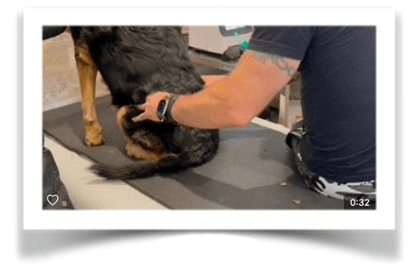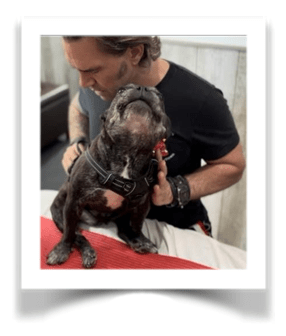Help is Here!
“Motion Is The Lotion”

Arthritis. When we hear that word, we think about pain. We think about stiffness. We think about a mysterious, growing, threatening disease that will render us or our loved ones unable to move, unable to enjoy life. We all have these thoughts. But do we really know what arthritis is? If you scour the Internet, you will find hundreds of articles on arthritis. I searched. I read. What I found frightened me. The articles all said things like; Arthritis is inevitable, progressive and irreversible. They offered the same vague solutions; prescription drugs, supplements and exercise may help but, if you have arthritis, get ready for a painful, slow decline. In most cases this simply isn’t true. Let me tell you why.
First let’s define the word, “Arthritis”. It is derived from two latin words: Arth meaning joint and Itis meaning inflammation. Webster’s Dictionary defines Arthritis as “Inflammation or pain in a joint”. That’s it. That’s what Arthritis is. Simple inflammation that occurs in your joints. So, let’s talk about inflammation. Inflammation is a natural biological response that occurs in every organ and location in our bodies. It is completely normal and natural. For example, if you are outside on a sunny day, your skin may become red from the sun. That’s inflammation. If you eat pizza when it’s too hot, you can burn your tongue. That’s inflammation. It’s normal. It happens all the time and our bodies repair the tissue and we remain healthy. The same thing happens in our joints. (*see below for clarification)
How do joints get inflamed? Simply put, joints get inflamed in two ways: Over use and under use. If you play too hard, walk or climb too far, your joints can get inflamed. If you’re a couch potato and don’t move around enough, your joints get inflamed. In other words, over doing it or under doing it. This applies to Dogs, Cats and Us.
Ok. So, If our bodies can heal, why is arthritis such a problem in people and pets? Great Question! The answer: because arthritic joints hurt when we move and yet we need to move to stop hurting. It’s a vicious cycle and hard to break because it’s counter intuitive for people and animals to move if it hurts. So, we change our movement. We compensate to avoid the pain. This leads to stress on other joints and muscles and now we have more areas of discomfort so we move even less and we compensate even more until we stop moving at all because everything hurts. Ouch!
What now? How do we help our pets and stop this cycle? There is a lot we can do to help our babies. Early detection and intervention is the most important. Look for the signs. Are they less interested in play? Are they sleeping more and moving less? Have they stopped their morning stretches? Are they reluctant to use stairs or get up on the couch? Are they having accidents in the house? Have they gained weight? These can all be because it hurts to move. If you see any of these signs, see if you can locate the discomfort. Gently scan their body from head to toe with light touch. Feel for heat, tightness and look for a response. Are they tender? In standing, gently pick up each leg and watch them shift weight. Is it smooth? are they resistant or unwilling to pick up a limb? Do they fall? Are they moving funny? Do they just look tired or crooked?
If you can locate the area(s) that are sore, you can put a heating pad on the area. Place it on high, test it on yourself first. If it doesn’t burn you, it won’t burn them. Do it for 15 minutes 3 times a day. The heat penetrates deeply, increasing circulation to the sore joints and muscles and may aide in allowing them more movement. More movement means less joint inflammation and we can break the cycle. Another way to help restore movement is massage. I always start with the low back. It’s easily accessible and almost always tight regardless of where the discomfort is.

The low back is located between the last rib and the tail.
Remember, less is more. Start massaging very lightly using small circular motions to the sore area. Yawning, relaxing, lying down are all positive signs to look for. If they tolerate massaging their low back, gently and slowly work your way to the area that is sore and start very lightly doing small circular motions.
It may take several tries for your pet
to trust you and let you massage them. Especially if the area is painful. Be gentle and patient. It’s worth it! In addition to heat and massage, Fish Oil, Chondroitin and Glucosamine have all been proven to be beneficial for joint health. They are not a miracle cure, but good accessories to a movement based program. I have also used CBD drops for my clients and it can be helpful to reduce discomfort and restore movement. Our goal in all of this is to restore normal movement. Keep in mind the
slogan, “Motion is the Lotion”. Drugs and restricted activity are almost never the solution.
If you have tried all of these home remedies and your pet is not getting better, it is time to contact your animal physical therapist or veterinarian for additional non drug solutions. Physical rehabilitation is an excellent solution for arthritis and other conditions that affect your pet’s movement and quality of life. With the right rehab program, drugs and costly surgery can usually be avoided.
In summary, Arthritis is a normal condition of pain and inflammation in the joints that can lead to pain, stiffness, weakness and decreased activity. But, by catching the signs early and resuming normal movement, we can reverse its effects and restore joint health and our loved one’s quality of life.

About the author: Tod Miner, PT CCRP is the owner of Arfit Dog Rehab and Fitness. He has been treating dogs and cats for muscle and joint injuries since 2007. Arfit provides free rehabilitation services to PAWS and other rescue organizations.
Arfit Dog Rehab and Fitness 2112 N. Clybourn ave A1 Chicago, il 60614 www.arfit.biz
312-620-4606
*This article deals with the condition of osteoarthritis. The most common form of joint inflammation. There are other diseases of the joint that occur less frequently including infectious and auto immune diseases that should be treated by a licensed veterinarian.
